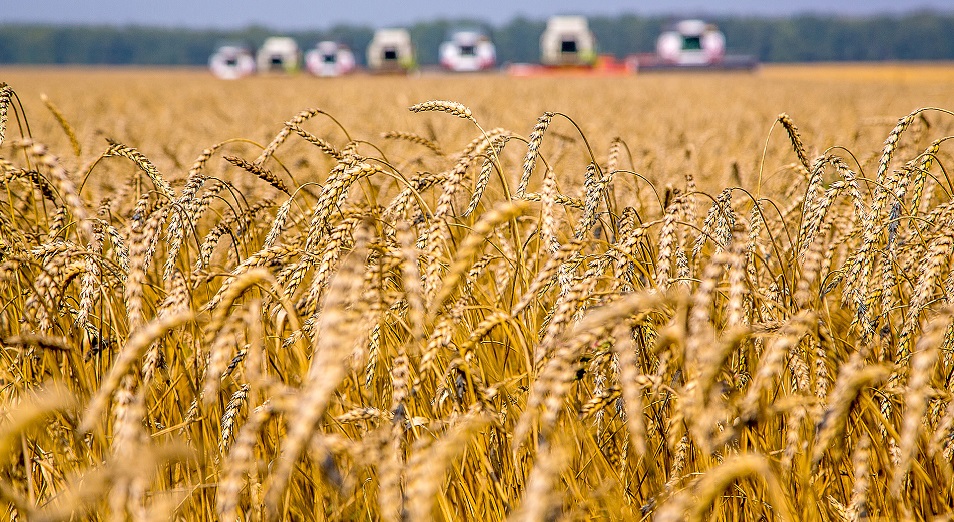Kazakhstan: what’s going on in 2022/23 season and harvest forecast for 2023

Article author:
Total grain production in Kazakhstan is 22 M mt (+34% up compared to 2021), including:
- wheat: 16.4 M mt (+39% y/y),
- barley: 3.3 M mt (+38%).
In September-February of 2022/23, wheat exports exceeded 4 M mt (+19% yoy), this is the record since 2011/12 MY. Key export destinations did not changed:
- Uzbekistan: +31%,
- Tajikistan: +28%,
- Afghanistan: +57%.
Shipments to China increased significantly (to 24.5 K mt, 100% more than in the 2021/22 season). The Minister of Trade and Integration Kazakhstan announced plans to increase wheat exports to China to 1 M mt per year.
Barley exports in September 2022-February 2023 amounted to 644 K mt (about 185 K mt). All importing countries increased demand for the barley:
- Iran: by 6 times,
- China: 8 times,
- Afghanistan: 4 times,
- Tajikistan: by 2 times.
The significant shipments increase has given us reason to revise upward previous estimate of barley exports from Kazakhstan by 50 K mt to 850 K mt (2022/23).
Flour production increased to 2.25 M mt (+5% y-o-y) with wheat flour exports in September 2022-February 2023 amounted to 1.14 M mt (+32% from 2021/22 MY), mainly due to growing demand from Afghanistan (up 44%).
The weather in winter before start of the spring crops sowing was much better than last year, except for drought in some winter wheat growing regions. However, the winter wheat share usually does not exceed 5-7% of the total harvest.
According to the Ministry of Agriculture of Kazakhstan, the total planted area in 2023 is expected to increase by 0.1 M ha. UkrAgroConsult will monitor the actually planted areas. In 2022 the Ministry expected a reduction of the total grain area by 400 K ha, but in fact the 2022 area expanded by 100 K ha.
UkrAgroConsult expects the grain area in Kazakhstan in 2023 may indeed increase, but most likely wheat area may decrease. UkrAgroConsult core scenario provides for wheat area reduction by 200 K ha in 2023 compared to 2022 due to the following factors:
-
Strong competition from Russian origin wheat in all major Central Asian markets: Russian wheat, even including delivery costs, is often cheaper than Kazakh wheat.
-
Growth of “gray” imports of wheat from Russia, mainly by trucks: local experts estimate the monthly illegal imports at 370 K mt of wheat. To protect domestic farmers, Kazakhstan authorities intend to ban the import of Russian wheat by trucks from April 10-12.
-
Logistics problems: lack of railway cars and locomotives, queues at the borders.
Full version of the article is available to subscribers of ‘BLACK SEA GRAIN’ Weekly Report by UkrAgroConsult.
Request a free a sample report and apply for subscription here.
Be confident with your business and trade strategy based on professional analysis and forecasts of the Black Sea agri market.
Further development of the Black Sea and global grain and oilseeds markets will be discussed by UkrAgroConsult analysts and leading agribusiness operators at the EURO GRAIN HUB Exchange & Forum on April 26-28 in Bucharest, Romania. Join the key stakeholders from the Black Sea region, Central & Eastern Europe and Balkans, contributing to the global commodity supply chain.
Read also
Wheat in Southern Brazil Impacted by Dry Weather and Frosts
Oilseed Industry. Leaders and Strategies in the Times of a Great Change
Black Sea & Danube Region: Oilseed and Vegoil Markets Within Ongoing Transfor...
Serbia. The drought will cause extremely high losses for farmers this year
2023/24 Safrinha Corn in Brazil 91% Harvested
Write to us
Our manager will contact you soon




